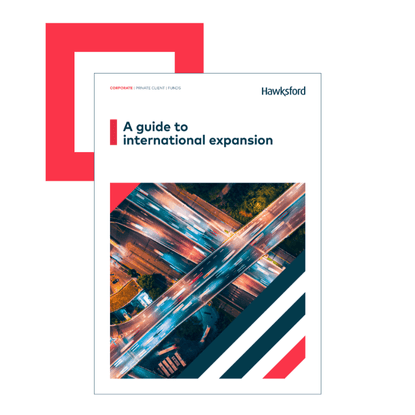The best way to describe a Trust is that of “a special legal relationship ” which was first developed under English law around the 12th century. This evolved from what we now call English Common Law.
First Look briefing - 01/02/2013
At the time, English Common Law did not recognise the difference between legal title and beneficial entitlement. The Kings Court of Chancery began to rule on cases which led to what we call the Principle of Equity, or fairness, which is now referred to as the Law of Equity.
A Trust
A trust allows for dual ownership of Title and of beneficial right. This is why a Trust is different from a company.
The separation of legal ownership and beneficial ownership is the unique characteristic of the Trust concept, as the Trustee has legal title to the trust property, where as the beneficiaries have equitable right to the trust property and the right to enjoy the Trust assets.
So, a Trust is a legally binding arrangement or obligation, whereby a person (known as a Settlor) transfers assets to another person or a company (known as a Trustee) who is entrusted with legal title to the trust assets, not for his own benefit, but for the benefit of other persons or a class known as beneficiaries, (who may include the settlor or for a specified purpose).
The instructions from the Settlor to the Trustee (as to the disposition of Trust assets) will normally be contained in a document called the Trust Instrument or Settlement Deed. This is for the benefit of all parties as it will ensure that the Settlor, the Trustee and the beneficiaries know precisely what their respective rights and duties are. The Trust instrument will usually provide the trustee with the power to manage the trust assets in accordance with the terms of the trust instrument and the strict duties imposed on the trustee under the chosen Trust Law.
In addition to the Trust instrument it is also important for a Settlor to indicate to the Trustee their wishes as to the management and disposition of the trust fund in the future. Their expression is contained in a Letter of Wishes which, although not legally binding, will generally be considered by the trustee to be an important guide when performing his duties and, for example, determining to make a distribution out of the trust fund.
The Trustee
Legal title to the Trust assets is entrusted to the Trustee under the obligations imposed by the Trust and they are responsible for the administration of the Trust. The Trust assets constitute a separate fund and do not form any part of the Trustee's own estate. There are strict statutory, Common laws and Trust laws imposed on the Trustee when undertaking his duties, such as to preserve and enhance the Trust Fund. Once a Trust is created the Settlor will have divested himself of legal ownership of the Trust assets (i.e. their assets no longer forming part of their estate). The Settlor may be a beneficiary.
Subject to having the appropriate advice, the Settlor may also have certain powers, for example such as the power to approve distributions, the power to appoint and remove Trustees and the power to revoke the Trust. However, it is essential to the validity of a trust that the Settlor actually dispossesses himself of the Trust assets.
The Beneficiaries
The beneficiaries are the persons entitled to benefit from the assets held on Trust, as set out in the Trust deed. As stated, the Settlor may themselves be one of the beneficiaries . In order for a Trust to be valid there must generally be sufficient certainty as to the identity of the beneficiaries . An express power for the addition of further persons to the class of beneficiaries may, however, be included in the Trust instrument. The beneficiaries may enjoy equal or unequal benefits, as the Trust instrument prescribes or, in the case of a discretionary Trust, as the Trustee may determine. It is also possible to include in the Trust instrument a power to exclude beneficiaries from future benefit.
Beneficiaries have rights in law to enforce the terms of the Trust and have the equitable right to the Trust assets.
The Trust Fund
The assets constituting the Trust fund may be of any type of movable or immovable property. At any time after settlement on trust of the initial assets, further assets may be added to the Trust fund.
The Protector
If the Settlor feels it is necessary, in order to counterbalance the wide discretionary and fiduciary powers a Trustee has, it is often found useful for the Settlor to appoint a trusted friend or professional adviser to act as a Protector of the Trust. In such cases the consent of the Protector will generally be required before the Trustee may exercise certain strategic powers under the Trust instrument.

Find out more about our private client services
Email or speak to any key contact on our private client services page to find out how we can help you.
Updated on



